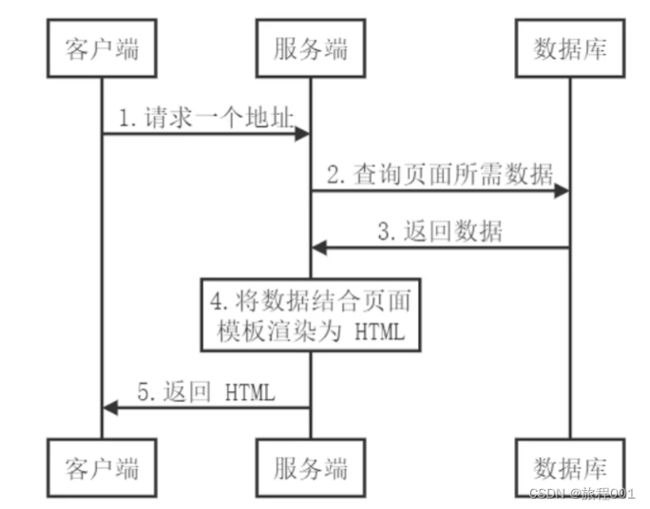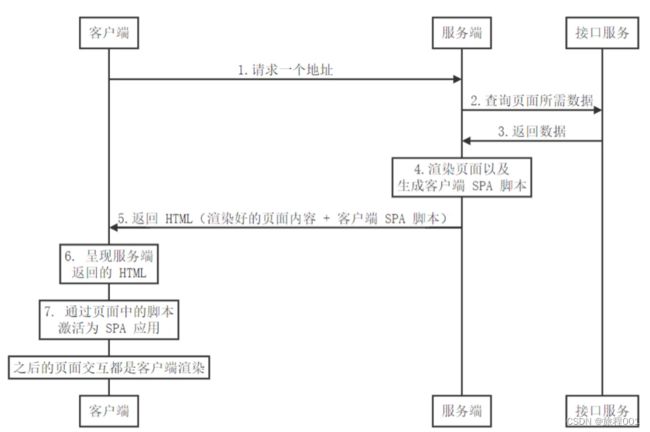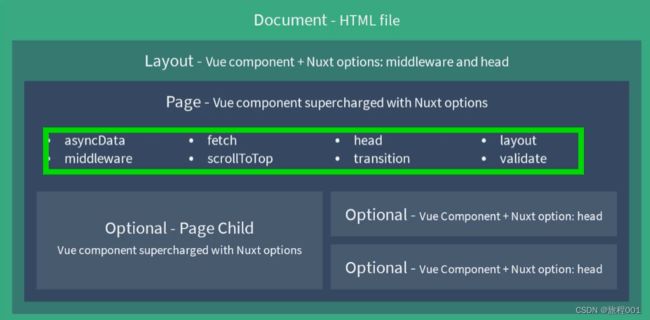Vuex与服务端渲染、Nuxt.js框架
目录
一、Vuex状态管理
1. vue组件间通信方式
父组件给子组件传值
子组件给父组件传值
不相关组件之间的传值
$root $parent $childern $refs
vuex存储库
2. vuex核心概念及基本使用
3. 模拟实现vuex
二、服务端渲染基础
1. SPA单页面应用的优缺点
2. 传统的服务端渲染(SSR)
3. 客户端渲染(CSR)
4. 同构渲染
三、NuxtJs
1. 创建初始化项目
2. 路由
路由的基础使用
校验动态路由参数的有效性validate
watchQuery监听参数字符串
3. 视图
模板
布局
4. asyncData异步数据
asyncData的使用
上下文对象
5. middleware 中间件
一、Vuex状态管理
1. vue组件间通信方式
父组件给子组件传值
子组件获取父组件传的值:props:{ fontSize: {...}} / props: ['fontSize']
provide: ['fontSize']
子组件给父组件传值
this.$emit(handler, option)
inject: ['fontSize']
不相关组件之间的传值
eventBus
// eventBus.js
import Vue from 'Vue'
export default new Vue()
// a.vue
import bus from './eventBis.js'
bus.$emit('handlerChange', value)
b.vue
import bus from './eventBis.js'
bus.$on('handlerChange', value => {...})
$root $parent $childern $refs
ref在标签上 获取的是DOM, 在组件上是组件实例
vuex存储库
2. vuex核心概念及基本使用
- vuex是专门为vue.js设计的状态管理库,是JS库
- vuex采用集中式的方式存储需要共享的状态
- vuex的作用是进行状态管理,解决复杂组件之间的通信
- vuex集成到了devtools中,提供了time-travel时光旅行历史回滚功能
// Store State Getter Mutation Action Modulev
import Vue from 'vue'
import Vuex from 'vuex'
Vue.use(Vuex)
export default new Vuex.Store({
state: {
count: 0,
msg: 'learn vuex'
},
getters: {
reverseMsg(state) {
return state.msg.split(' ').reverse().join(' ')
}
},
// 同步执行
mutations:{
increate(state, payload){
state.count += payload
}
},
// 可执行异步任务
actions:{
increateAsync({ commit }, payload) {
setTimeout(()=>{
commit('increate', payload)
},1000)
}
},
modules:{
product // 另一个包含state actions mutations getters的store
}
})
// 使用
$store.state.count
$store.getters.reverseMsg
$store.commit('increate', 2)
$store.dispatch('increateAsync', 2)
// 或
import { mapState, mapGetters, mapMutations, mapActions } from 'Vuex'
// state getters的使用
computed:{
...mapState(['count'])
...mapGetters(['reverseMsg'])
}
// 取别名
computed:{
...mapState({ num:'count'})
}
// mutations actions的使用
methods:{
...mapMutations(['increate']) // 模板中直接使用increate(2)
...mapActions(['increateAsync'])
}
// 使用module模块里的store
this.$store.state.product.xxx
// 提交mutations是一样的 this.$store.commit('handle', xxx)
//开启命名空间 nameSpace:true 区分不同模块的行为
...mapState('product', ['xxx'])
...mapMutations('product', ['xxx'])
3. 模拟实现vuex
// myvuex/index.js
let _vue = null;
class Store{
constructor(options) {
const { state = {}, getters = {}, mutations ={}, actions = {}} = options;
this.state = _Vue.observable(state);
this.getters = Object.create(null);
Object.keys(getters).forEach(key => {
Object.defineProperty(this.getters, key, {
get: () => getters[key](state)
})
})
this._mutations = mutations
this._actions = actions
}
commit(type, payload) {
this._mutations[type](this.state, payload)
}
dispatch(type, payload) {
this._actions[type](this, payload)
}
}
function install(Vue) {
_Vue = Vue
_vue.mixin({
beforeCreate() {
if (this.$options.store) {
_Vue.prototype.$store = this.$options.store
}
}
})
}
export default {
Store,
install
}二、服务端渲染基础
1. SPA单页面应用的优缺点
优点:
- 用户体验好
- 开发效率高
- 渲染性能好
- 可维护性好
缺点:
- 首屏渲染时间长
- 不利于SEO(搜索引擎)
2. 传统的服务端渲染(SSR)
缺点:
- 前后端代码混合
- 服务端压力大
- 体验不够好 页面要整体刷新
3. 客户端渲染(CSR)
缺点:
- 首屏渲染时间长
- 不利于SEO(搜索引擎)
4. 同构渲染
- 在服务端执行一次,用于实现服务端渲染(首屏直出)
- 在客户端再执行一次,用户接管页面交互
注意事项:
- 不能在服务端渲染期间操作DOM
- 一些扩展库可能需要特殊的处理才能在服务端渲染应用中运行
- 某些操作代码需要区分运行环境
- 浏览器特定的代码只能在某些生命周期钩子函数中使用
与客户端渲染在构建和部署上的区别
三、NuxtJs
一个基于Vue.js生态的第三方开源服务端渲染应用框架
可以轻松的使用Vue技术栈构建同构应用
通过对客户端/服务端基础架构的抽象组织,Nuxt.js 主要关注的是应用的 UI 渲染。
可以基于它初始化新项目的基础结构代码,或者在已有 Node.js 项目中使用 Nuxt.js。
1. 创建初始化项目
npm init -y
npm install nuxt
npm run nuxt
// nuxt框架
yarn create nuxt-app <项目名>2. 路由
路由的基础使用
//nuxt 会根据pages目录下的文件自动生成路由
// nuxt-link组件
校验动态路由参数的有效性validate
validate({ params, query }) {
return true // 如果参数有效
return false // 参数无效,Nuxt.js 停止渲染当前页面并显示错误页面
}watchQuery监听参数字符串
参数字符串更改并在更改时执行组件方法 (asyncData, fetch, validate, layout, ...)
默认不使用
export default {
watchQuery: ['page']
}3. 视图
模板
{{ HEAD }}
{{ APP }}
布局
根目录下layout/default.vue文件夹 文件中需要
当需要问一个.vue文件指定父组件 可以使用 layout:'xxx' // xxx 是layout下面的组件
4. asyncData异步数据
asyncData的使用
export default {
name: 'xxx',
async asyncData() {
// 根据接口获取后端数据然后return出去 return 出去的数据会放在data中
}
}- 服务端渲染期间 渲染到客户端前 客户端路由导航前执行
- 只能在页面组件(pages下的页面)中使用
- 没有this 组件渲染前调用的
上下文对象
async asyncData(context) {
// 根据接口获取后端数据然后return出去 return 出去的数据会放在data中
// context: 上下文中含有 params
}5. middleware 中间件
相当于路由守卫 判断是否有权限
// pages/secret.vue
Secret page
//middleware/authenticated.js
export default function ({ store, redirect }) {
// If the user is not authenticated
if (!store.state.authenticated) {
return redirect('/login')
}
}




